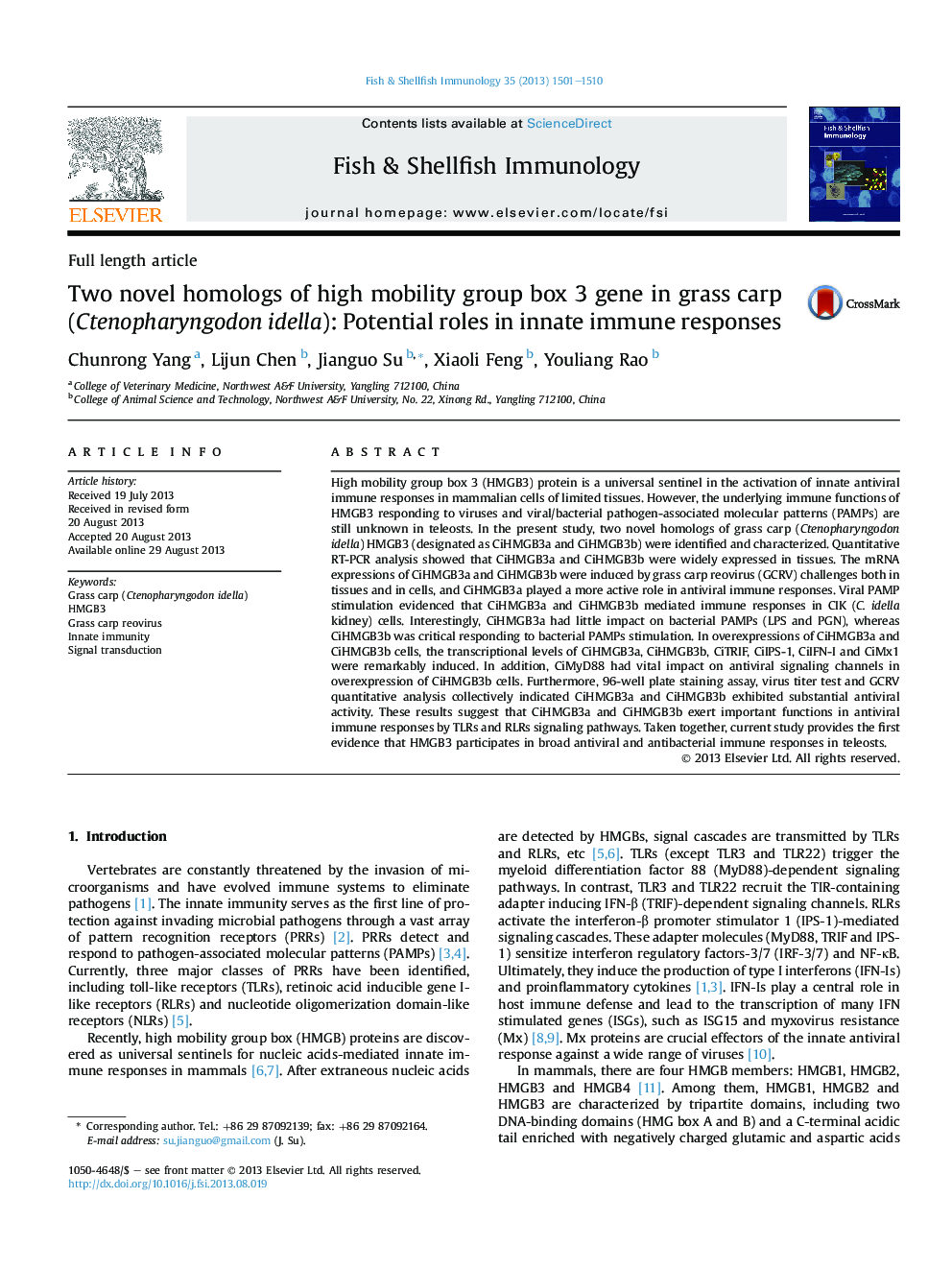| Article ID | Journal | Published Year | Pages | File Type |
|---|---|---|---|---|
| 2431720 | Fish & Shellfish Immunology | 2013 | 10 Pages |
•Two novel HMGB3 homologs were identified and characterized in grass carp.•The tissue distributions of CiHMGB3a and CiHMGB3b are ubiquitous.•Providing the first evidence on the innate immune function of HMGB3 in teleosts.•CiHMGB3b exerts immune responses upon bacterial PAMPs stimulation in CIK cells.•CiHMGB3a/3b participate in the activation of TLRs/RLRs immune signaling pathways.
High mobility group box 3 (HMGB3) protein is a universal sentinel in the activation of innate antiviral immune responses in mammalian cells of limited tissues. However, the underlying immune functions of HMGB3 responding to viruses and viral/bacterial pathogen-associated molecular patterns (PAMPs) are still unknown in teleosts. In the present study, two novel homologs of grass carp (Ctenopharyngodon idella) HMGB3 (designated as CiHMGB3a and CiHMGB3b) were identified and characterized. Quantitative RT-PCR analysis showed that CiHMGB3a and CiHMGB3b were widely expressed in tissues. The mRNA expressions of CiHMGB3a and CiHMGB3b were induced by grass carp reovirus (GCRV) challenges both in tissues and in cells, and CiHMGB3a played a more active role in antiviral immune responses. Viral PAMP stimulation evidenced that CiHMGB3a and CiHMGB3b mediated immune responses in CIK (C. idella kidney) cells. Interestingly, CiHMGB3a had little impact on bacterial PAMPs (LPS and PGN), whereas CiHMGB3b was critical responding to bacterial PAMPs stimulation. In overexpressions of CiHMGB3a and CiHMGB3b cells, the transcriptional levels of CiHMGB3a, CiHMGB3b, CiTRIF, CiIPS-1, CiIFN-I and CiMx1 were remarkably induced. In addition, CiMyD88 had vital impact on antiviral signaling channels in overexpression of CiHMGB3b cells. Furthermore, 96-well plate staining assay, virus titer test and GCRV quantitative analysis collectively indicated CiHMGB3a and CiHMGB3b exhibited substantial antiviral activity. These results suggest that CiHMGB3a and CiHMGB3b exert important functions in antiviral immune responses by TLRs and RLRs signaling pathways. Taken together, current study provides the first evidence that HMGB3 participates in broad antiviral and antibacterial immune responses in teleosts.
